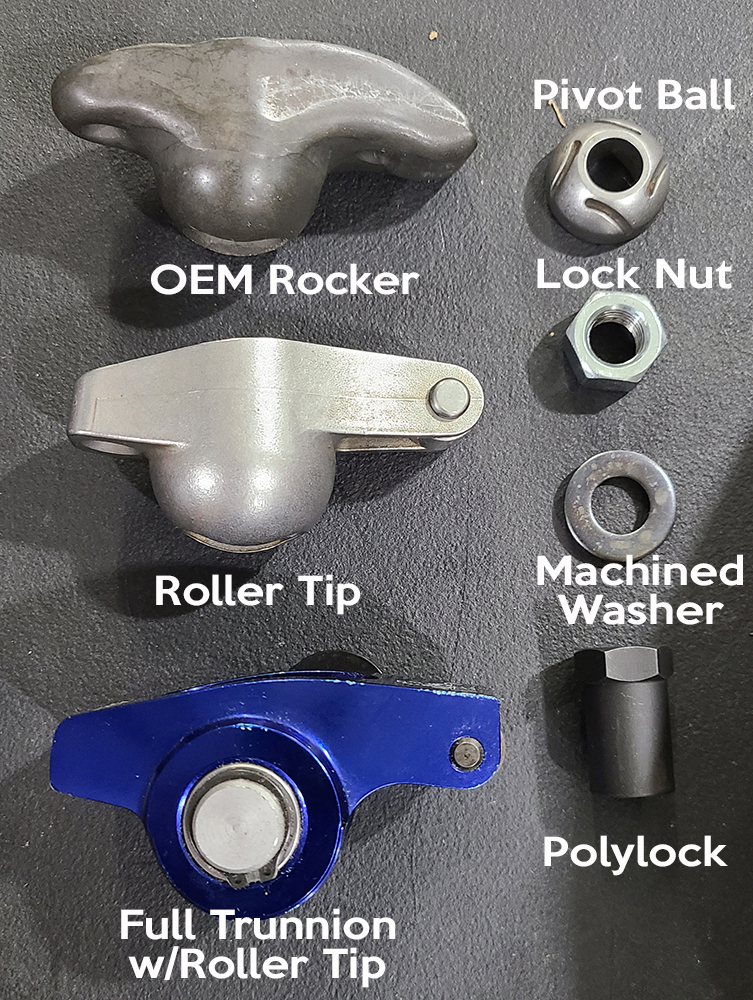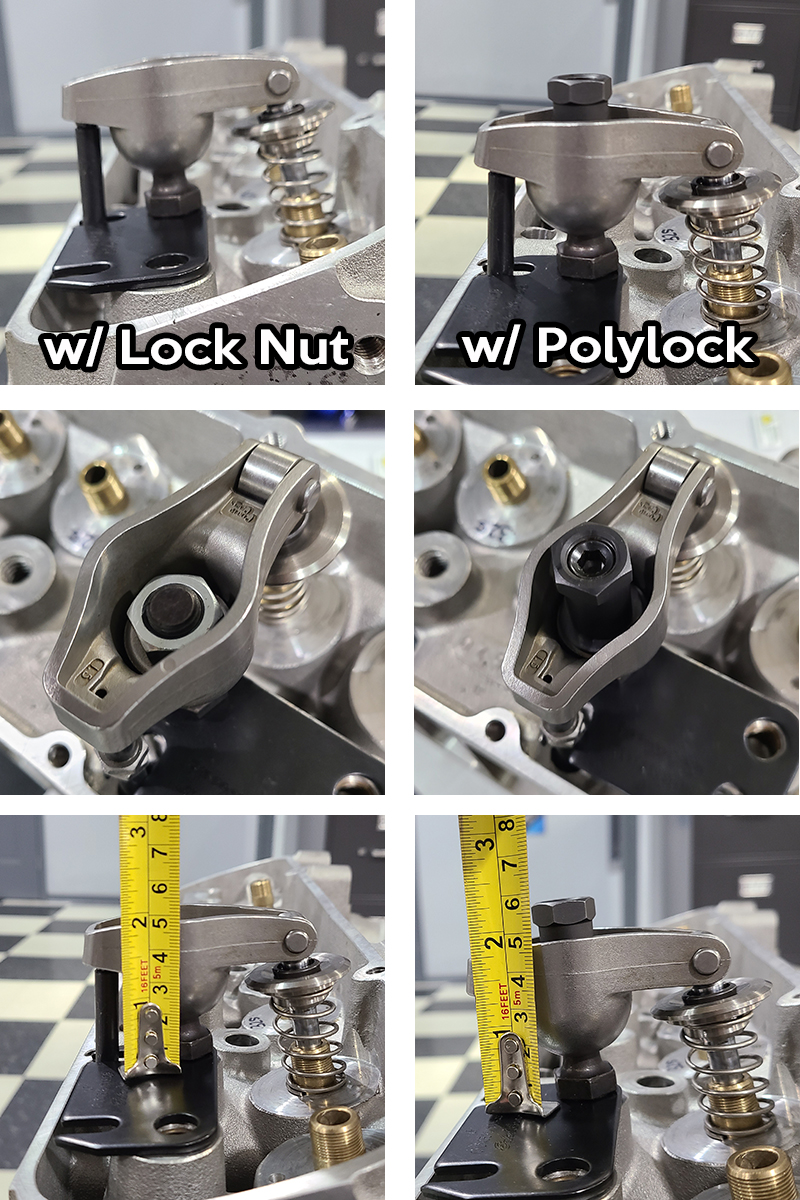Pontiac Rockers
Rocker Types
There are 3 basic types of rockers for Pontiacs. OEM Style Steel tip rockers, roller tip rockers, and full trunnion roller rockers. The differences are obvious when looked at closely.
This article will not address rocker geometry but only the rocker differences and uses.
**DO NOT TORQUE ROCKER NUTS TO 20lbs AS STATED IN PONTIAC SHOP MANUALS**
Pivot balls are rounded steel on the bottom and flat on top. The rounded part hugs the inside of the rockers and allows the rocker to pivot when the pushrod and valves is engaged. This is used in flat tappet applications where the spring pressure is not as high as hydraulic roller applications.
The polylock has a center locking screw that locks against the top of the stud. The polylock comes standard with trunnion style rockers but can also be used with steel and roller tip rockers with pivot balls. They may require a machined washer to space up the lock in case it bottoms out on the stud too early. We use machined washers so the thickness is consistent.
OEM Style Steel Rockers
Oem steel rockers are what came standard on factory Pontiacs. These are the most basic styles of rockers and are still available. The steel tip rocker uses a pivot ball and a lock nut. The image below shows the rocker mockup with a lock nut as well as with a polylock and the difference the polylock makes in height. This height is crucial when using stock type valve covers and a polylock.
Roller Tip Rockers
Roller tip rockers were the first performance upgrade where the tip of the rocker has a roller installed. This allows the tip to roll and spread out the contact point across the wheel rather than in one place. The image below shows the rocker mockup with a lock nut as well as with a polylock and the difference the polylock makes in height. This height is crucial when using stock type valve covers and a polylock.
Full Roller Rockers w/Trunnion
The full trunnion rocker is the choice for high performance applications and commonly used in hydraulic roller cam applications. Although a roller tip can be used Butler does not recommend it. The roller cams have a much higher spring rate and the trunnion keep the rocker in a free floating form so as not to be restricted by the friction of the ball on the steel rocker.
Rocker Ratio's
Most common rocker ratio's are 1.5 and 1.65. The difference physically is where the pushrod intersects the rocker. The 1.5 is out toward the end of the rocker and the 1.65 is closer to the center area by the stud. The cam can create more lift by going with 1.65 ratio rockers. Moving the pivot point on the rocker allows the tip to have more travel. This can work to produce more lift but comes with a drawback. There is far less stress on the rocker and stud when the opposite force is farther from the center as in a 1.5 ratio rocker. It takes much more force to pivot the rocker when it is closer to the center stud area. This added stress could cause valvetrain issues depending on application. Some older heads came with press in studs and they can be pulled out with the extra force applied. The best situation would be to select your desired lift when replacing your cam and run 1.5 ratio but if a cam change is not being done you can get more lift by changing rocker ratio.

Common Questions
Q. Can I use a roller tip with a hydraulic roller cam?
A. We do not suggest it as we explained earlier. The spring pressures are much greater and the friction will not allow the rocker to freely move and can cause damage to the rocker and possibly the cam
Q. Will a roller rocker fit under my stock valve covers?
A. That depends on the style of the roller rocker, trunnion or roller tip and if using a polylock. Normally a full trunnion roller rocker will not clear a stock style cover. Some stock style covers also contain a drip rail inside the cover. To keep a stock style cover you can try thick valve cover gaskets, double gaskets up, or use a thick gasket along with a valve cover spacer.






Rick. 2025-03-25 18:24:26
67 Pontiac GTO 400, 670 Heads, would I have problems changing 1.5 to 1.65 Rocker Arms, lining up or other issues ?